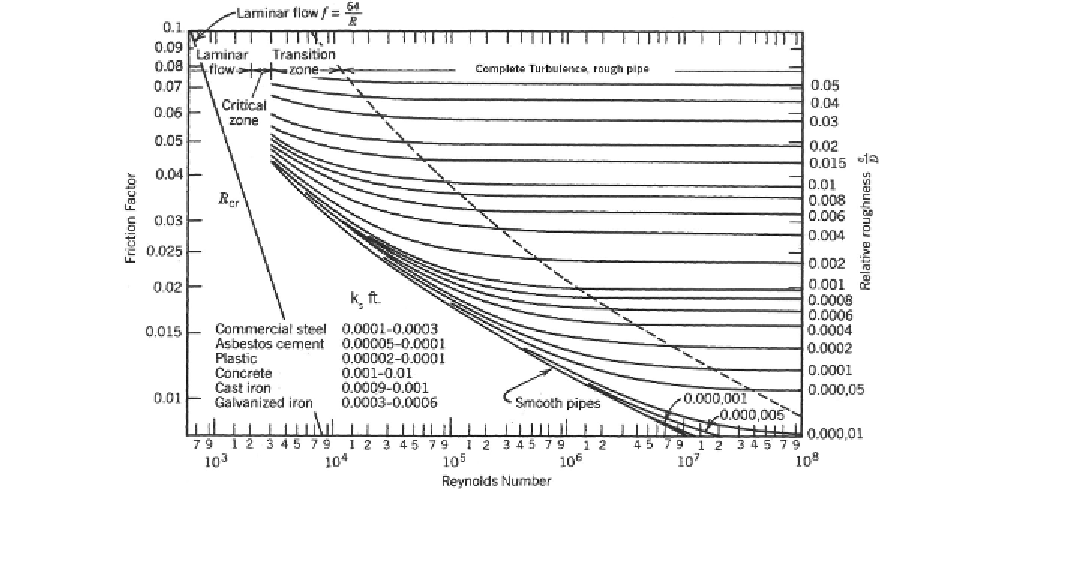Environmental Engineering Reference
In-Depth Information
Figure 9.3
Moody diagram
pipe wall roughness typically varies during the life of the pipe as a result of pipe
wall material removal and deposition, mineral deposition, or growth of organic
matter. Manufacturing methods also cause variations in the surface roughness.
The representative values of
k
s
listed in Figure 9.4 should be considered approxi-
mate (consult pipe manufacturer) and proper allowance should be made for these
uncertainties.
To determine
f
using the Moody diagram (Figure 9.3), Re and
k
s
/D
must
be known. Re can be calculated directly if the water temperature,
Q
,and
D
are known. The problem then becomes obtaining a good value for
k
s
. If either
the
Q
or
D
is not known, the solution to the Darcy-Weisbach or Swamee-Jain
equations require a trial-and-error or iterative solution.
For long gravity-flow pipelines, the criterion for pipe diameter selection is
simply finding the smallest pipe that can pass the required flow rate without the
friction and minor losses exceeding the available head. The required flow rate
for design should consider both current and future demand considerations. For
pumped systems, optimizing the pipe diameter is based on an economic analysis
that compares the installed pipe cost with the cost of building and operating the
pumping plant. Pipe cost is proportional to
D
and friction loss, which is related
to the required pumping head and operating cost, is inversely proportional to
D
. The optimum pipe diameter is selected as the one that provides the lowest
total cost.




Search WWH ::

Custom Search